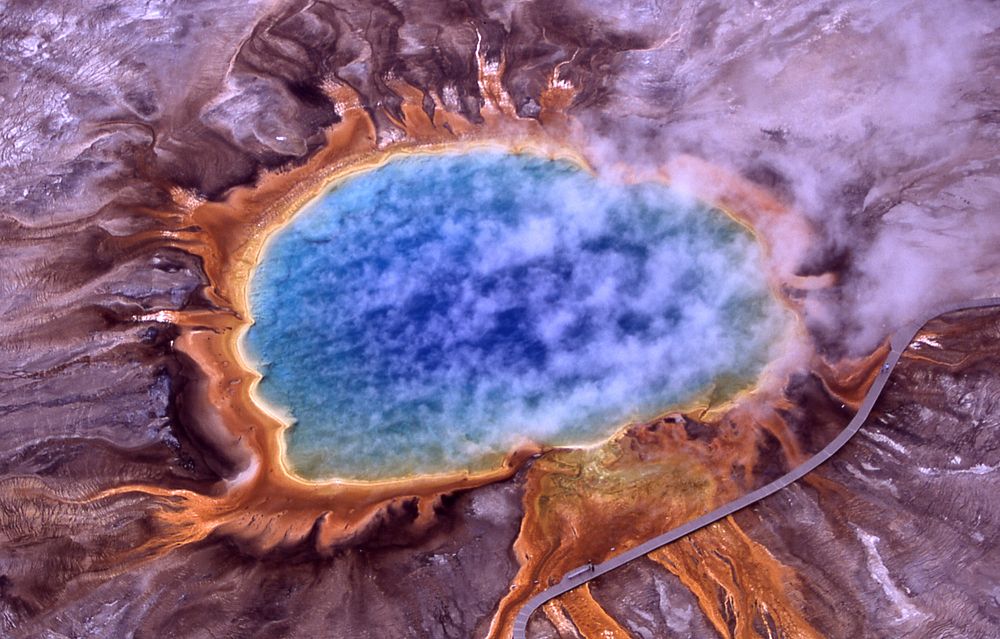https://creativecommons.org/publicdomain/zero/1.0/https://www.rawpixel.com/image/8718260

Aerial view of Grand Prismatic Spring; Hot Springs, Midway & Lower Geyser Basin, Yellowstone National Park. The spring is approximately 250 by 300 feet (75 by 91 m) in size. This photo shows steam rising from hot and sterile deep azure blue water (owing to the light absorbing overtone of an OH stretch which is shifted to 698 nm by hydrogen bonding [1]) in the center surrounded by huge mats of brilliant orange algae, bacteria and archaea. The color of which is due to the ratio of chlorophyll to carotenoid molecules produced by the organisms. During summertime the chlorophyll content of the organisms is low and thus the mats appear orange, red, or yellow. However during the winter, the mats are usually dark green, because sunlight is more scarce and the microbes produce more chlorophyll to compensate, thereby masking the carotenoid colors.
Original public domain image from Wikimedia Commons
Public DomainFree CC0 image for Personal and Business use